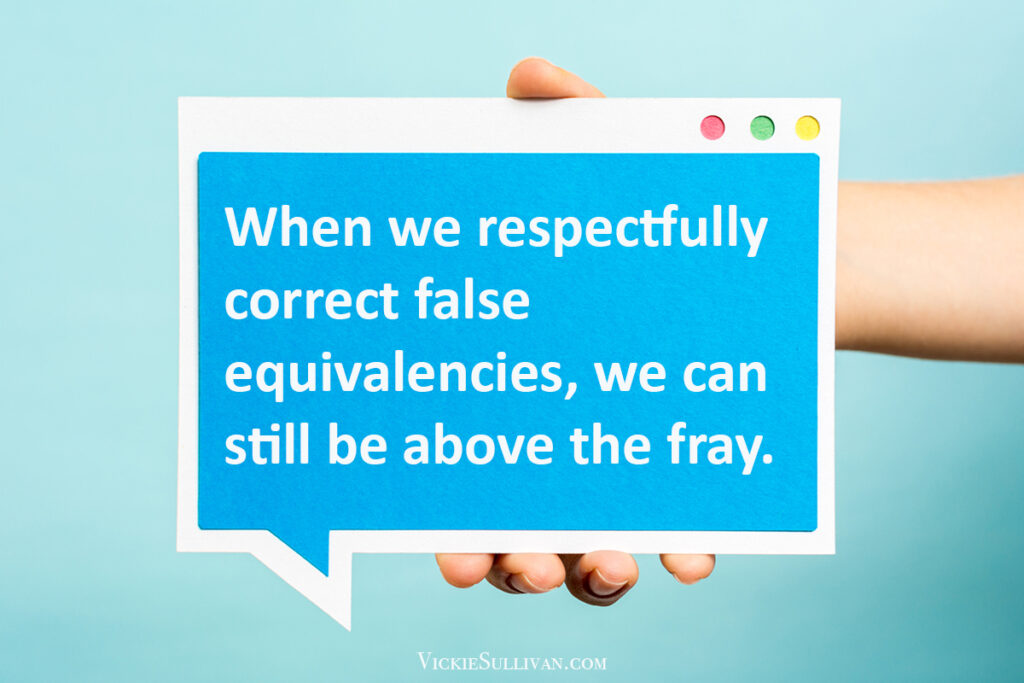Written by: Vickie Sullivan | November 24, 2020
How to Respond to False Equivalencies

Debates on social media often involve people making false equivalencies. It’s tempting to do so – and for a good reason: It’s a great way to appear objective and play the role of peacemaker. The problem, however, is a false equivalence is an “unreasonable comparison.”
As an article in Effectiviology says, “False equivalence is a logical fallacy that occurs when someone incorrectly asserts that two or more things are equivalent, simply because they share some characteristics, despite the fact that there are also notable differences between them.”
The big question for us: How do thought leaders respond to false equivalencies without starting a tit-for-tat debate? If we reply in kind, we are no longer above the fray. And if we respond with more facts, the argument continues.
2-Step Response for Responding to False Equivalencies
1. Acknowledge the person’s point. Most folks want to be heard. More importantly, they want to be right. So, I find some fact in their statement – however small – that I can agree with. Most of the time, I say something like, “Yep, that did happen.” This acknowledgement can take the wind out of most arguments.
Listen: Top 2 Reasons Why People Unintentionally Use False Equivalencies
Audio Player2. Change the context. Instead of commenting on the people involved, I emphasize the situation and the roles by changing the context. For example, I’ll point out there’s a difference between someone who hits back in response and the person who threw the first punch. By describing the same dynamic in a different environment, you can explore the differences without making the other person wrong.
Times are fraught, and everyone is jostling to defend their ideas. Add in COVID-19 and politics, and emotions run extremely high. When we respectfully correct false equivalencies, we can remain above the fray.
Now Read This:
- How to Make Your Content Intriguing: Use Strategic Comparisons
- Strategic Sounding Boards Give Real-World Advice for When the Rubber Meets the Road
